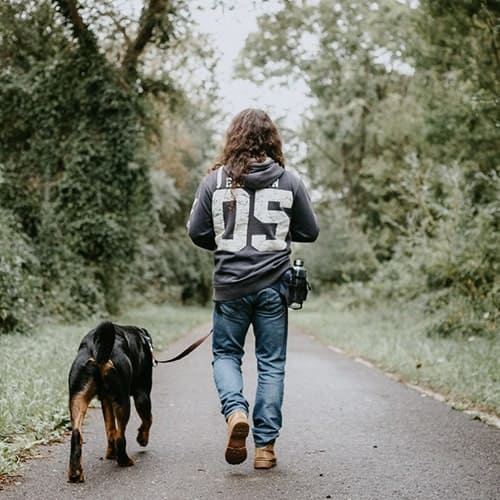My most recent moorland walk was a fact-finding mission. I’ve realised two things lately:
1. Though I spend a great deal of time roaming around on the moors and in the woods, I rarely venture down into the valleys, where the villages are.
2. If I want to tempt my compadres from more southern parts of Yorkshire or even further afield into meeting me for weekend strolls, I need to vastly improve my knowledge of country pubs, tearooms and other watering holes.
So I got up early and made my way to the southern part of the national park, just west of Pickering, where with a walk of 16km or so, you can link together four chocolate-box little villages, all remarkably picturesque, croft-and-toft sorts of places with wholesome-looking public houses.
I started in Hutton-le-Hole, cutting across fields and moors to reach Lastingham, then uphill to the old Norman outpost at Cropton, and finally back down via the unusually wide high Street of Appleton-le-Moors, dominated by the grand bulk of Appleton Hall. About half way round, I foolishly bought 3kg of potatoes from a roadside barrow (at 75p for the bag the Yorkshireman in me couldn’t resist) before remembering I had to carry it all the way back.
As always, I found far more interesting things than there is space in a blog post, but here were my top three.
1. The former hilltop outpost of Cropton, with the remnants of its old motte and bailey castle, is home to the Cropton Brewery, underneath the New Inn. I recall getting reasonably ruined on their excellent Yorkshire Warrior at the Great British Beer Festival in 2011, but on this occasion I went for a pint of their standard bitter, which was also just grand. They do tours of the microbrewery, and it’s a cracking pub too, with all the usual enticing smells of hearty lunches drifting across the road outside. Occurs to me there’s so much good walking and drinking in the area that it would be worth assembling a gang of friends and getting a B&B in the village sometime to make the most of it without having to worry about the drive home.
2. I can never work out whether I find it absurd or not that people get all dressed up and pay a very large amount of money to go and shoot at birds on a hilltop. But I’m quite glad they do, since I’m fairly certain their extravagant hobby subsidises pretty much everyone else (like me) who enjoys the moors and its villages. And if you’re not too sensitive about the basic principles of killing and eating animals (fair enough if you are – each to their own, after all), then the spectacle of a shoot is a remarkable thing. Coming across a section of moor between Lastingham and Cropton, I wandered into the aftermath of one, with keepers and their dogs roaming the heather, picking up the birds. The men had big bunches of grouse slung on bindles over their shoulders like something out of a Thomas Hardy novel, while the motley collection of spaniels and labs snuffled excitedly through the undergrowth, completely focused on the task in hand. I daresay you could have crossed this same patch of land a century ago and seen almost the exact same thing.
3. The tiny village of Lastingham has the most extraordinary ancient church, built on the site of an old monastery, and home to the last remains of a celtic saint called Cedd. Like most churches in the area, it’s open to the public in a refreshing display of trust, and as I stood admiring it from the outside, I bumped into a Saturday morning cleaning crew consisting of two welcoming pensioners. They invited me in and gave me a little leaflet explaining the history of the place, confiding that ‘the crypt is the best bit’. And it was. Cold and atmosheric yet not particularly creepy, with a medieval corpse bier down one side, and a stone slab carved by vikings over a thousand years ago leaned up against one of the pillars. I put my 50p in the pot, lit a candle, and sat for a while in silence, contemplating how much I love living in a place where so much history is just waiting around quietly for you to find it.

